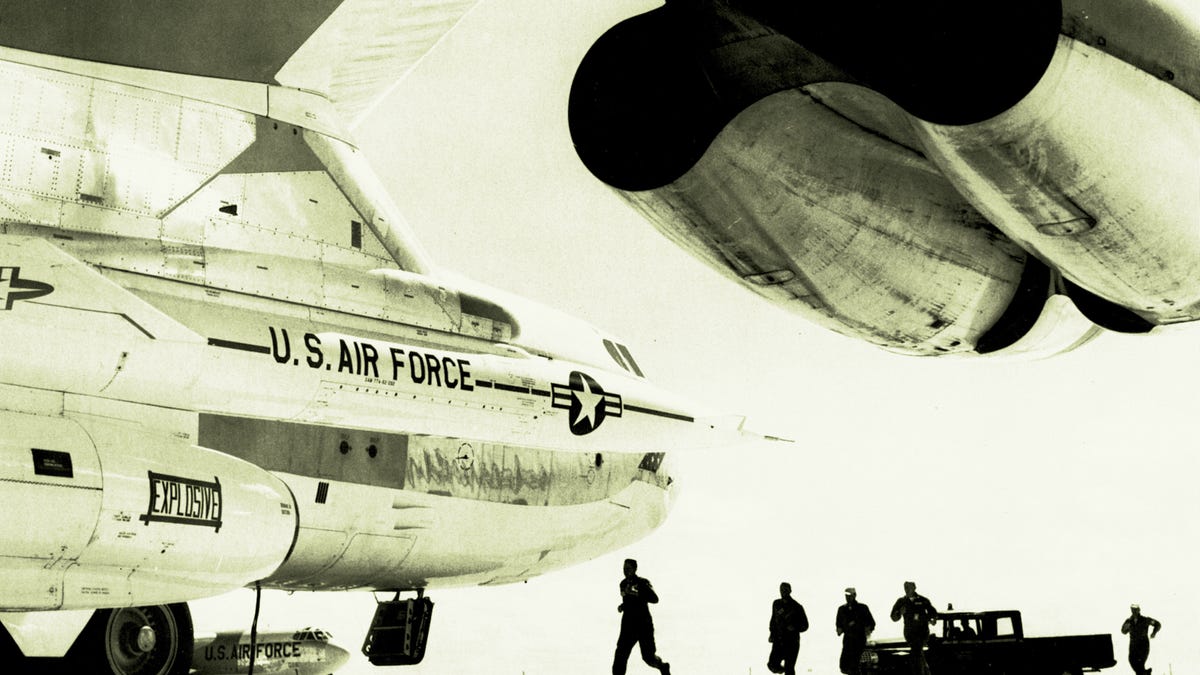Sixty years on, the B-52 is still going strong
The iconic aircraft of the Cold War made its debut flight in 1952. The Air Force says the bomber could easily still be flying in the year 2040.

Along with the ICBM, it was one of the defining pieces of military technology during the Cold War: the B-52 bomber.
Those who grew up in the 1960s and 1970s knew the B-52 Stratofortress as a central figure in the anxiety that flowed from the protracted staring match between the U.S. and the Soviet Union. On the one hand, it was reassuring to know that the Strategic Air Command was ready at a moment's notice to scramble its B-52s to counter any potential nuclear attack. On the other hand, if the bombers were flying that mission, well, things might well have ended badly for everyone.
Not for nothing did Stanley Kubrick give a B-52 pilot a climactic role in the 1964 movie "Dr. Strangelove." (Full name of the film: "Dr. Strangelove or: How I How I Learned to Stop Worrying and Love the Bomb.") Remember Slim Pickens as Major T.J. "King" Kong descending to Earth, yeehawing and riding bareback on a nuke? The movie poster, meanwhile, featured a seemingly endless sortie of B-52s.
But while the nuclear-tinged Cold War has come and, thankfully, gone, the B-52 is still going strong. And this after a half-century of service.
It was 60 years ago today, on April 15, 1952, that a B-52 prototype built by Boeing took off on its maiden flight. The 1950s-vintage B-52s are no longer in the U.S. Air Force inventory, but the 90 or so that remain on active duty (a total of 744 were built, counting all models) aren't that much younger. They're all the H model of the B-52, delivered between May 1961 and October 1962. That means the youngest is on the cusp of its 50th birthday.
That feat of longevity reflects both regular maintenance and timely upgrades -- in the late 1980s, for instance, GPS capabilities were incorporated into the navigation system.
It also speaks to the astronomical costs of the next-generation bombers that have followed the B-52 into service with the Air Force. As David Axe tells it in "Bombs Away: How the Air Force Sold Its Risky New $55 Billion Plane," which ran a few weeks ago in Wired's Danger Room blog, the B-52s cost about $70 million apiece (in today's dollars), while the later, stealth-shaped B-2 Spirit bombers carried an "eye-watering $3-billion-a-pop unit price."
The Air Force's 30-year forecast, published in March, envisions an enduring role for the B-52, even as it eyes "aggressive funding" for the development of the futuristic Long-Range Strike Bomber (LRS-B) heading toward initial capability in the mid-2020s. At the same time, the Air Force plans to "modernize the B-52 fleet with new visual displays and an increased weapons storage capacity."
And engineering studies, the Air Force says, suggest that the life span of the B-52 could extend beyond 2040. At that point, why not aim for the centennial mark?

